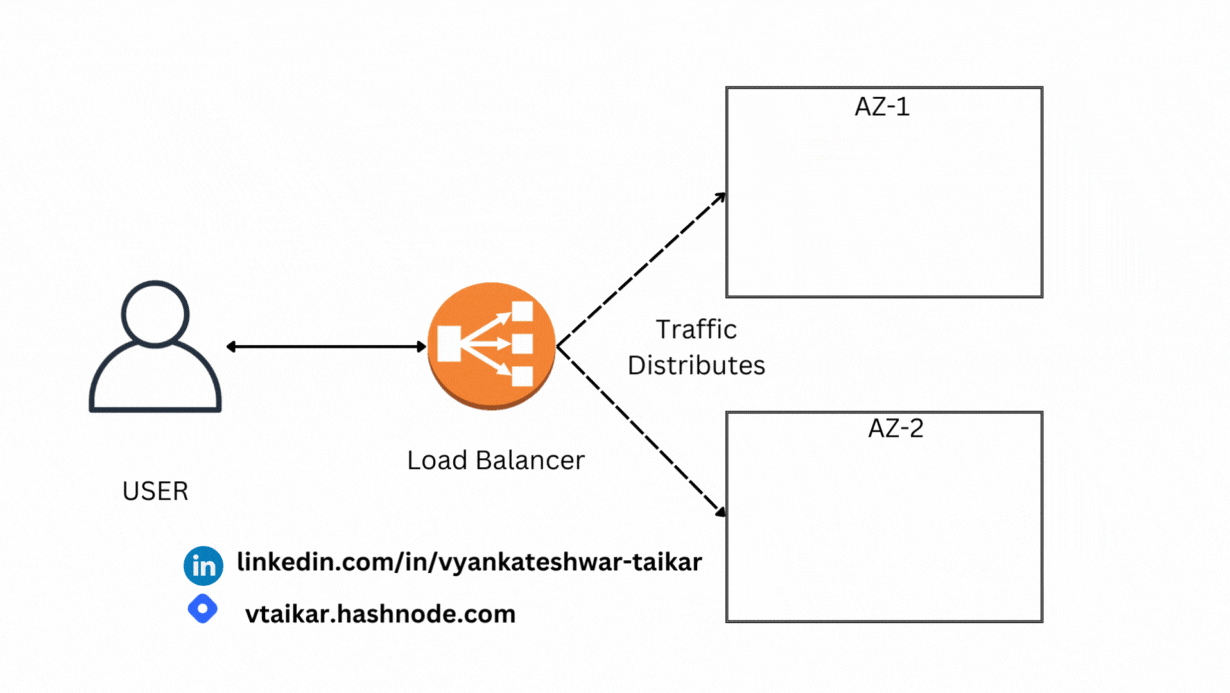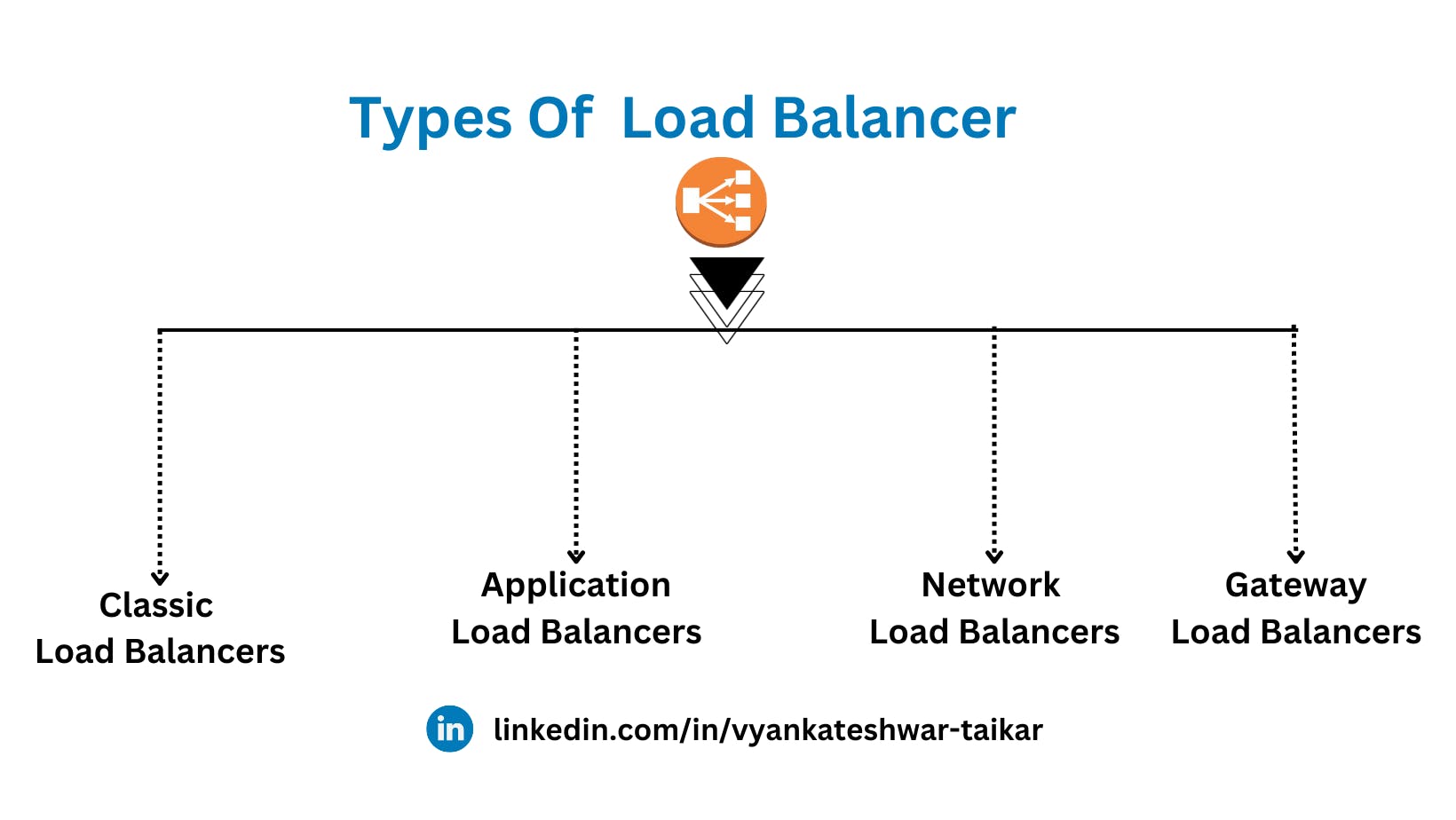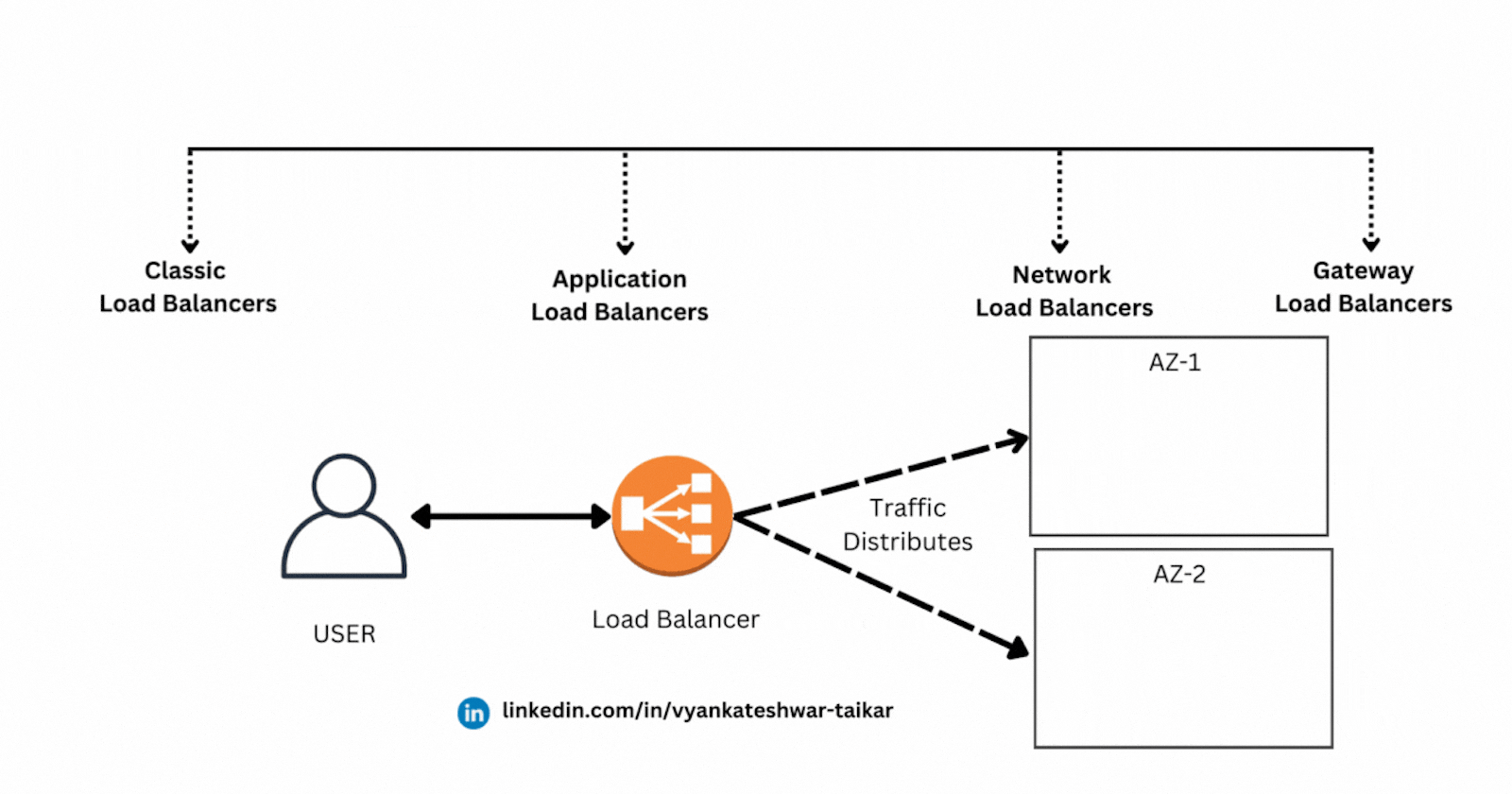I'll be discussing AWS Elastic Load Balancer (ELB) in this article & its Basics with parameters, and types.
Elastic Load Balancing (ELB) is a load-balancing method for AWS deployments to manage high traffic needs, it intelligently distributes incoming application traffic and scales resources as needed.
Amazon Web Services (AWS) provides a service called load balancing (ELB) that automatically distributes incoming network traffic among several targets in one or more availability zones, including IP addresses, containers, and Amazon Elastic Compute Cloud (EC2) instances.
ELB has the ability to effectively distribute traffic and make sure that it is only sent to healthy targets, which enhances the availability, fault tolerance, and scalability of your applications.
🌟What are load balancers and exactly how do they works?

Load balancers keeps a check on the state of the back-end resources to prevent directing traffic to servers that are insufficient to handle requests.
Load balancing is the process of splitting up the workload in a distributed system so that no machine is stressed out, underworked, or inactive.
It is designed to speed up a number of cloud environment features, including system stability, execution time, and response time.
🌟Benefits of Load Balancer in AWS Cloud
High Availability: The most common service based on Elastic Load Balancer is Amazon EC2 instances. Elastic Load Balancer performs health checks to ensure your instances are running before sending traffic. To further increase application reliability, developers can combine Amazon Route 53 with Domain Name System (DNS) transitions.
Health Checks: You can configure health checks that periodically assess the health of your compute resources. ELB maintains the overall stability of your application by only redirecting traffic to resources that pass these health checks.
Auto Scaling: Developers can use AWS Auto Scaling to ensure there are enough EC2 instances running behind an ELB. Developers can set Auto Scaling conditions, and when the conditions are met, new EC2 instances can run at the specified minimum level. Developers can also set conditions for the creation of new EC2 instances to reduce latency.
Fault tolerance: ELB improves the availability of your applications by automatically detecting and redirecting traffic from malicious or failed targets. If a destination is not healthy, ELB reduces the impact of potential failures by stopping sending traffic until it recovers.
Security: AWS Elastic Load Balancer supports applications in Amazon VPC to improve network security. Your IT team can specify whether an Internet connection or internal load balancing is required. This last option allows developers to route traffic through the ELB using private IP addresses.
Traffic distribution: ELB distributes incoming traffic evenly across multiple compute resources, such as EC2 instances or containers, ensuring that no resource is overloaded while other resources are idle. This helps optimize resource usage.
Offloading Encryption : ELB offloads encryption and decryption to reduce the computational burden on your computing resources and allows you to focus on core tasks.
🌟Types of Load Balancer
Classic Load Balancer
A load balancer that distributes traffic across multiple instances across multiple Availability Zones is called a classic load balancer.
Classic Load Balancer (CLB) is a deprecated load balancer that is no longer recommended for new applications.
It is a Layer 4 load balancer that operates at the TCP/IP layer and distributes traffic based on source IP address, port number, and protocol.
CLB supports both HTTP and TCP applications.
AWS has announced that CLB will be not used on December 31, 2022.
ALB and NLB are modern load balancers that offer more features and better performance than CLB.A load balancer that distributes traffic across multiple instances across multiple Availability Zones is called a classic load balancer.
EC2 Classic supports both EC2-VPC and increases application availability by directing traffic to to ensure that the registered instances can handle the demand, each Availability Zone must maintain approximately the same number of registered instances in the load balancer.
Application Load Balancer
A load balancer is a load balancer that assigns content-based traffic to the appropriate target groups called as Application Load Balancer (ALB).
AWS Elastic Load Balancing automatically distributes inbound traffic to multiple targets, including EC2 instances, containers, and IP addresses, across one or more Availability Zones.
Among the different types of load balancers, Application Load Balancer (ALB) stands out as a versatile solution that works at the application level and provides advanced routing and content-based traffic management.
A new feature-rich 7-layer load balancing platform. It supports web sockets, HTTP, HTTPS, microservices, and container-based applications, including tight integration with the EC2 container service. Supports path-based and host-based routing.
It also handles routing requests for multiple applications from a single EC2 instance. Cross-region load balancing is always enabled, and you can also specify that your Lambda function is designed to handle HTTP(S) requests. For sticky sessions only, the load balancer accepts generated cookies.
Network Load Balancer
AWS Elastic Load Balancing automatically directs incoming traffic to multiple destinations, such as Amazon EC2 instances, containers, and IP addresses, in one or more Availability Zones.
Among the load balancing options, Network Load Balancer (NLB) stands out as a powerful solution for operating at the transport layer (Layer 4) of the Open Systems Interconnection (OSI) model.
Network Load Balancer avoids latency by handling bursty and interrupted traffic between EC2 instances.
It supports connection database load balancing and TCP protocol. Ability to handle highly volatile workloads and scale to millions of requests per second. Supports static IP addresses for load balancing.
Alternatively, assign a single elastic IP address to the connected subnets for load balancing. Cross-zone load balancing is disabled by default.
When you assign a target using an instance ID, the source IP address of the client is tracked and provided to your application. The source IP address is the individual IP address of the load balancer when the destination is specified by IP address.
A network load balancer supports client connectivity by balancing VPCs across regions. AWS-managed VPN solutions and third-party VPN solutions.
Gateway load balancing
AWS Elastic Load Balancing evenly distributes incoming network traffic across multiple targets, including EC2 instances, containers, and IP addresses, while monitoring the health of those targets.
Among the various load balancers, Gateway Load Balancer (GWLB) is a specialized solution designed specifically for the deployment and management of virtual appliances.
This makes it easy to scale, deploy, and manage third-party virtual appliances.
It provides a single gateway that can distribute traffic across multiple VMs, scaling up or down as needed.
This improves availability and eliminates potential points of failure in the network.
AWS Marketplace allows users to find, test, and buy virtual appliances directly from third-party vendors.
This integrated environment simplifies the deployment process so users can quickly see the value of virtual appliances, whether they want to work with their current vendor or try something new.

👉 Follow for more AWS and DevOps related content : Click Here
I hope you enjoy the blog post !
If you do, please show your support by giving it a like ❤, leaving a comment 💬, and spreading the word 📢 to your friends and colleagues 😊
